-
 Bitcoin
Bitcoin $111300
-0.83% -
 Ethereum
Ethereum $4296
-0.28% -
 XRP
XRP $2.970
-0.28% -
 Tether USDt
Tether USDt $0.0000
0.01% -
 BNB
BNB $876.7
-0.13% -
 Solana
Solana $216.7
0.50% -
 USDC
USDC $0.9998
0.01% -
 Dogecoin
Dogecoin $0.2424
1.50% -
 TRON
TRON $0.3345
0.88% -
 Cardano
Cardano $0.8635
0.03% -
 Hyperliquid
Hyperliquid $53.38
5.54% -
 Chainlink
Chainlink $23.07
0.27% -
 Ethena USDe
Ethena USDe $1.001
0.02% -
 Sui
Sui $3.463
-0.21% -
 Stellar
Stellar $0.3738
-0.33% -
 Bitcoin Cash
Bitcoin Cash $578.5
-1.51% -
 Avalanche
Avalanche $26.00
2.07% -
 Hedera
Hedera $0.2276
0.77% -
 UNUS SED LEO
UNUS SED LEO $9.548
0.02% -
 Cronos
Cronos $0.2597
2.73% -
 Litecoin
Litecoin $112.0
-0.64% -
 Toncoin
Toncoin $3.089
-0.29% -
 Shiba Inu
Shiba Inu $0.00001285
-0.10% -
 Polkadot
Polkadot $4.098
1.54% -
 Uniswap
Uniswap $9.484
-0.88% -
 Ethena
Ethena $0.8361
8.06% -
 Dai
Dai $0.9998
0.01% -
 Monero
Monero $269.5
-0.68% -
 World Liberty Financial
World Liberty Financial $0.1994
-4.02% -
 Aave
Aave $299.1
-1.29%
What is the volume in futures trading and what does it indicate?
High volume in crypto futures signals strong market conviction, helping traders confirm breakouts, spot reversals, and assess true price trend strength.
Aug 13, 2025 at 11:35 am
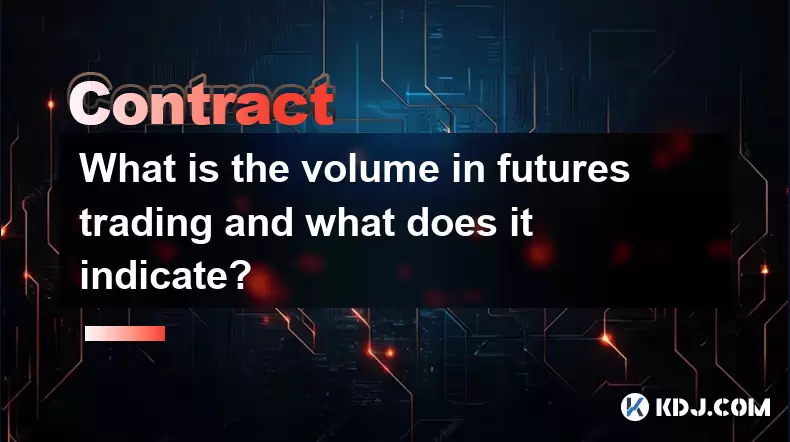
Understanding Volume in Futures Trading
In the context of cryptocurrency futures trading, volume refers to the total number of contracts traded within a specific time frame, typically over 24 hours. This metric reflects the activity level of a particular futures market and is a key indicator of market interest and liquidity. When traders enter or exit positions—whether through opening new long or short contracts or closing existing ones—each transaction contributes to the overall volume. High volume indicates that many participants are actively trading a specific futures contract, while low volume suggests limited engagement.
The volume is distinct from open interest, which measures the total number of outstanding contracts that have not been settled. While volume resets daily, open interest accumulates over time. Understanding the difference between these two metrics is essential for accurate market analysis. For example, a spike in volume accompanied by rising open interest signals new money entering the market, often confirming a strong trend.
How Volume Reflects Market Sentiment
Volume plays a critical role in interpreting market sentiment in cryptocurrency futures. When price increases alongside high volume, it typically indicates strong buying pressure and confidence among traders. Conversely, if the price drops with high volume, it suggests aggressive selling, possibly due to fear or negative news. Traders use this relationship to validate the strength of price movements.
For instance, if Bitcoin futures rise in price but with low volume, the rally may lack conviction and could be short-lived. On the other hand, a breakout in price supported by a surge in volume is more likely to sustain momentum. This principle applies across major cryptocurrencies like Ethereum, Solana, and others traded in futures markets. Observing volume patterns during key events—such as macroeconomic announcements or protocol upgrades—can reveal how the market digests information.
Using Volume to Identify Breakouts and Reversals
One of the most practical applications of volume in futures trading is identifying breakouts and potential reversals. A breakout occurs when the price moves beyond a defined support or resistance level. However, not all breakouts are reliable. Traders assess the accompanying volume to determine legitimacy.
- If a breakout happens with significantly higher volume than average, it is more likely to be genuine.
- A breakout on low volume may be a false signal, often resulting in a quick reversal.
- In downtrends, a sudden spike in volume during a price drop could indicate capitulation, where weak holders exit en masse.
Similarly, volume can help spot reversals. For example, after a prolonged downtrend, if the price begins to stabilize and volume increases on upward moves while decreasing on downward ones, it may suggest accumulation by informed traders. This shift in volume dynamics often precedes a trend reversal.
Volume Analysis Tools and Indicators
Traders use various tools to analyze volume in cryptocurrency futures markets. One of the most common is the Volume Weighted Average Price (VWAP), which calculates the average price weighted by volume over a specified period. VWAP is especially useful for institutional traders and helps identify whether they are buying or selling aggressively.
Another popular indicator is the On-Balance Volume (OBV), which adds volume on up days and subtracts it on down days. A rising OBV line confirms an uptrend, while a falling OBV may warn of weakening momentum even if prices are still climbing. Additionally, volume bars displayed beneath price charts on platforms like Binance Futures, Bybit, or OKX provide immediate visual feedback on trading intensity.
Customizable features allow traders to set alerts for volume spikes or compare current volume to historical averages. These tools enable more informed decisions, especially during volatile periods common in crypto markets.
Step-by-Step Guide to Monitoring Volume on a Futures Platform
To effectively use volume data, traders must know how to access and interpret it on trading platforms. Below is a detailed walkthrough using Binance Futures as an example:
- Log in to your Binance account and navigate to the Futures section.
- Select the cryptocurrency pair you wish to analyze, such as BTC/USDT.
- On the trading chart, locate the volume bar chart at the bottom. It appears as vertical bars beneath the price chart.
- Click on the settings icon (gear symbol) on the volume panel to adjust display options, such as color (green for up periods, red for down).
- Enable VWAP or OBV from the indicators menu to overlay volume-based metrics on the chart.
- Use the time frame selector (e.g., 1h, 4h, 1d) to observe how volume behaves across different intervals.
- Compare current volume to the 20-day average by noting the height of the volume bars—taller bars indicate above-average activity.
This process applies similarly to other exchanges, though interface layouts may vary slightly. Ensuring that volume data is visible and properly configured is essential for real-time decision-making.
Interpreting Volume in Relation to Leverage and Liquidations
In cryptocurrency futures, leverage amplifies both gains and risks, and volume often correlates with liquidation events. When volume spikes during sharp price movements, it frequently coincides with mass liquidations of over-leveraged positions. For example, if Bitcoin drops rapidly and volume surges, long positions with high leverage may be automatically closed by the exchange, adding to downward pressure.
Monitoring liquidation heatmaps alongside volume can provide deeper insights. Platforms like Coinglass display real-time liquidation data, showing where clusters of long and short positions are vulnerable. A high-volume drop into a dense zone of long liquidations confirms bearish momentum. Conversely, a high-volume rally through a cluster of short positions may trigger a short squeeze, accelerating price gains.
This interplay between volume, leverage, and liquidations is unique to futures markets and is particularly pronounced in crypto due to 24/7 trading and high volatility.
Frequently Asked Questions
What is the difference between spot trading volume and futures trading volume?Spot trading volume reflects the total amount of a cryptocurrency bought or sold in cash markets, while futures trading volume counts the number of derivative contracts traded. Futures volume includes both opening and closing positions and is influenced by leverage, making it more sensitive to sentiment shifts.
Can volume be manipulated in cryptocurrency futures markets?Some exchanges may experience wash trading, where traders execute self-dealing to inflate volume. To avoid misleading data, traders should rely on volume from reputable platforms with transparent reporting and audit trails, such as Binance or Bybit.
How does volume affect slippage in futures trading?High volume typically reduces slippage because there are more counterparties available to fill orders at desired prices. In low-volume markets, entering or exiting large positions can significantly impact the price, leading to higher slippage and execution risk.
Is volume more important than price in futures trading?Volume does not replace price but complements it. Price shows what is happening, while volume reveals how strongly it is happening. Ignoring volume may lead to misinterpreting weak price moves as significant trends.
Disclaimer:info@kdj.com
The information provided is not trading advice. kdj.com does not assume any responsibility for any investments made based on the information provided in this article. Cryptocurrencies are highly volatile and it is highly recommended that you invest with caution after thorough research!
If you believe that the content used on this website infringes your copyright, please contact us immediately (info@kdj.com) and we will delete it promptly.
- BlackRock, Bitcoin ETF, and the Next BTC Move: What's Driving the Market?
- 2025-09-10 04:25:13
- Play-to-Earn, Crypto Games, and the Web3 Future: A New Yorker's Take
- 2025-09-10 04:25:13
- Meme Coins: Explosive Gains in 2025? What You Need to Know
- 2025-09-10 04:30:12
- EigenLayer (EIGEN): Exchange Listings Fuel Rally Amidst Technical Crosscurrents
- 2025-09-10 04:30:12
- Crypto Coins in September 2025: Navigating Investment Opportunities
- 2025-09-10 04:35:13
- Bitcoin Price, JPMorgan, and CPI Data: Decoding the Crypto Market's Next Move
- 2025-09-10 04:35:13
Related knowledge
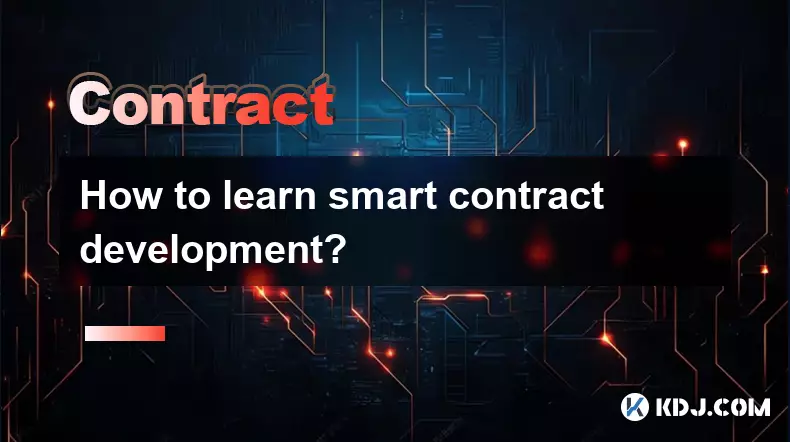
How to learn smart contract development?
Sep 09,2025 at 02:18am
Understanding the Foundation of Smart Contracts1. Smart contract development begins with a solid understanding of what smart contracts are—self-execut...
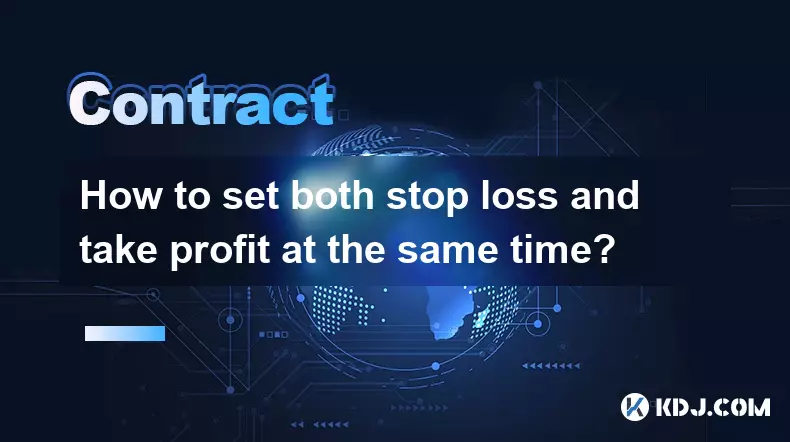
How to set both stop loss and take profit at the same time?
Sep 06,2025 at 04:36pm
Understanding Simultaneous Stop Loss and Take Profit Orders1. Placing both stop loss and take profit orders at the same time is a standard practice in...

What is copy trading for crypto futures?
Sep 07,2025 at 02:00am
What Is Copy Trading in Crypto Futures?1. Copy trading in crypto futures allows investors to automatically replicate the trades of experienced traders...
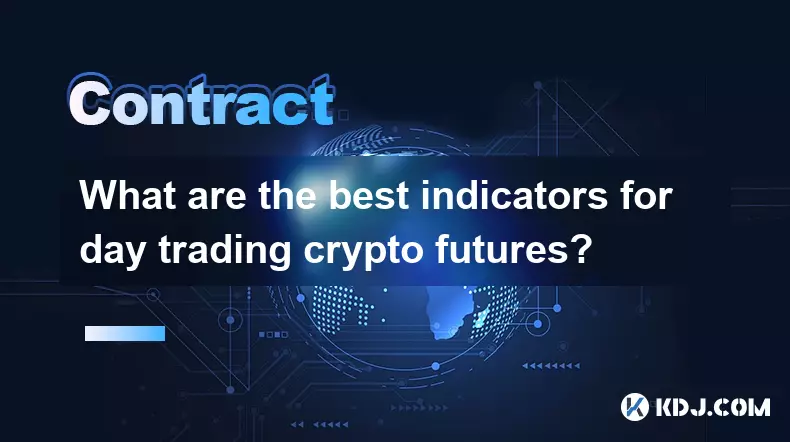
What are the best indicators for day trading crypto futures?
Sep 08,2025 at 10:18am
Top Technical Indicators for Crypto Futures Day Trading1. The Relative Strength Index (RSI) is widely used to identify overbought or oversold conditio...
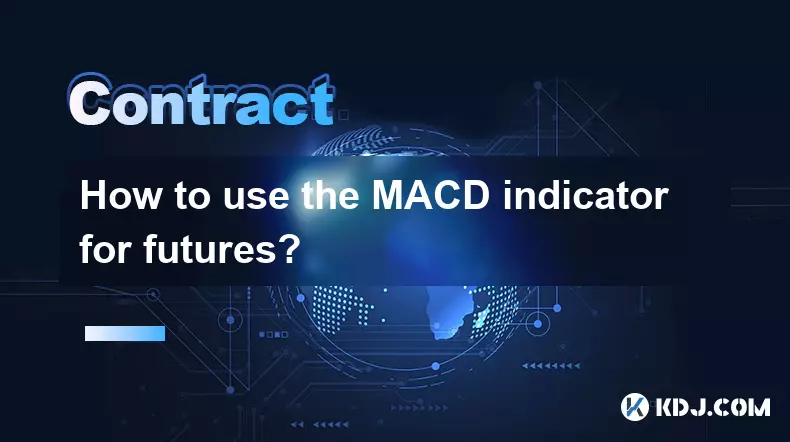
How to use the MACD indicator for futures?
Sep 07,2025 at 09:00pm
Understanding the MACD Indicator in Futures Trading1. The MACD (Moving Average Convergence Divergence) indicator is a momentum oscillator widely used ...

What to do if you are about to be liquidated?
Sep 06,2025 at 01:00am
Understanding Liquidation in the Crypto Market1. Liquidation occurs when a trader’s margin balance falls below the required maintenance margin, forcin...

How to learn smart contract development?
Sep 09,2025 at 02:18am
Understanding the Foundation of Smart Contracts1. Smart contract development begins with a solid understanding of what smart contracts are—self-execut...

How to set both stop loss and take profit at the same time?
Sep 06,2025 at 04:36pm
Understanding Simultaneous Stop Loss and Take Profit Orders1. Placing both stop loss and take profit orders at the same time is a standard practice in...

What is copy trading for crypto futures?
Sep 07,2025 at 02:00am
What Is Copy Trading in Crypto Futures?1. Copy trading in crypto futures allows investors to automatically replicate the trades of experienced traders...

What are the best indicators for day trading crypto futures?
Sep 08,2025 at 10:18am
Top Technical Indicators for Crypto Futures Day Trading1. The Relative Strength Index (RSI) is widely used to identify overbought or oversold conditio...

How to use the MACD indicator for futures?
Sep 07,2025 at 09:00pm
Understanding the MACD Indicator in Futures Trading1. The MACD (Moving Average Convergence Divergence) indicator is a momentum oscillator widely used ...

What to do if you are about to be liquidated?
Sep 06,2025 at 01:00am
Understanding Liquidation in the Crypto Market1. Liquidation occurs when a trader’s margin balance falls below the required maintenance margin, forcin...
See all articles
























































































